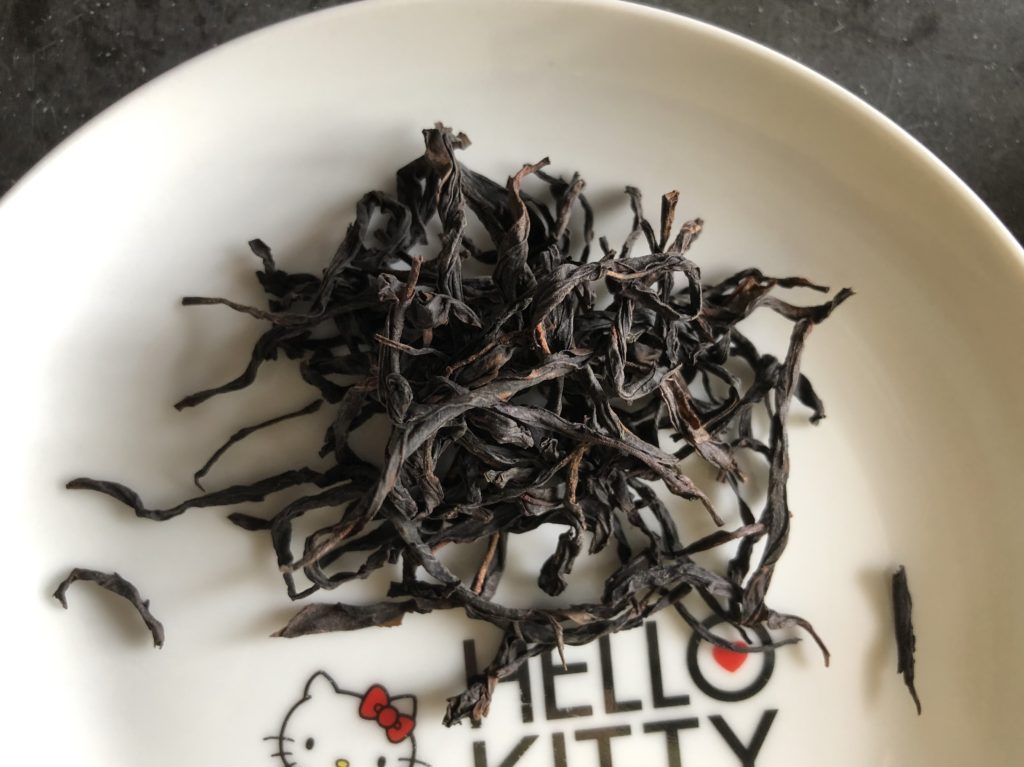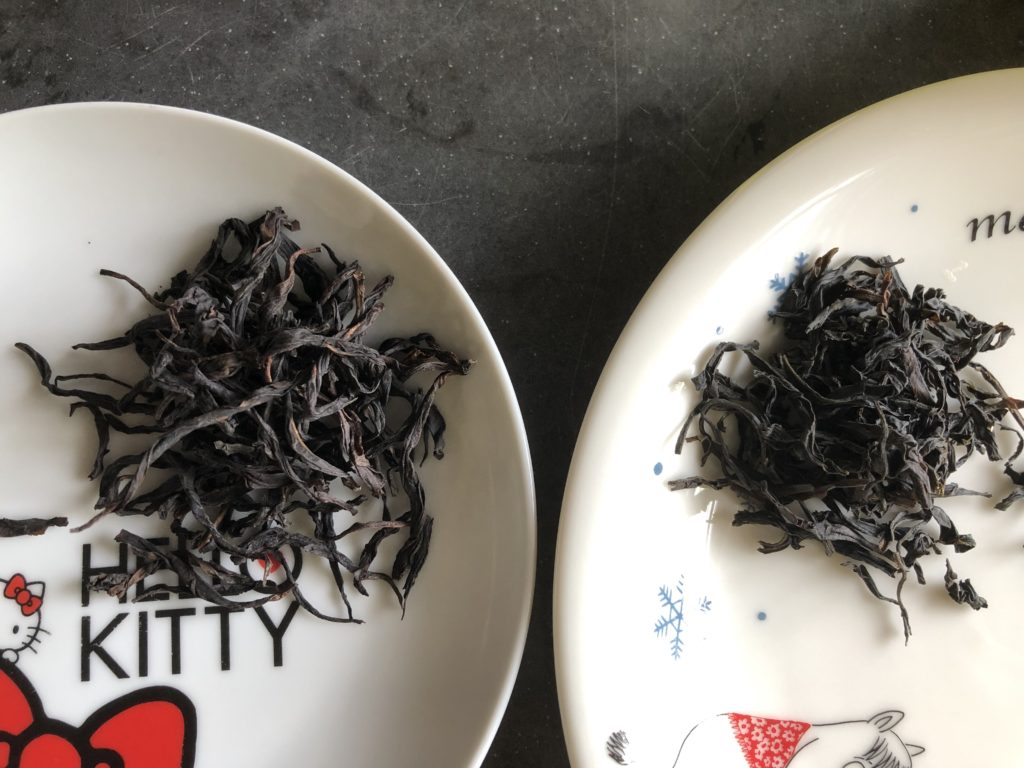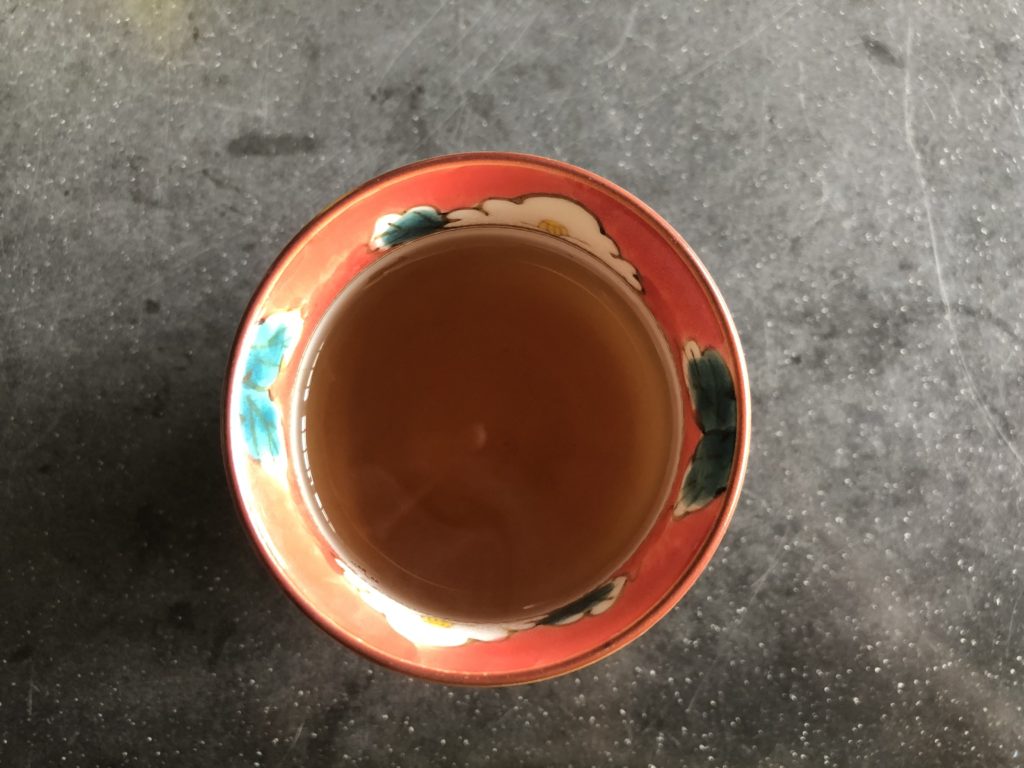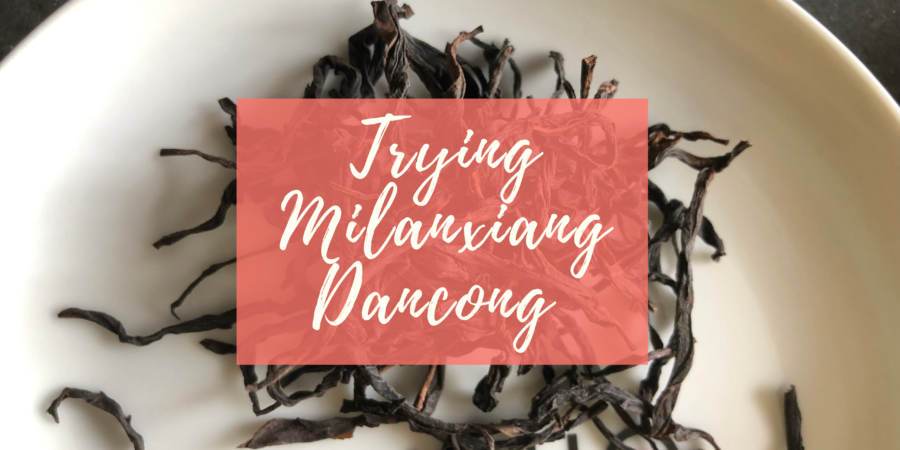Apart from Duck Shit Dancong, my latest tea haul included Milanxiang, a tea I chose because the name sounded appealing. I’ve already covered the basics of Dancong in my post on Duck Shit Dancong, so I’ll just do an introduction of Milanxiang in this one.
What is Milanxiang Dancong?
Written as 蜜兰香, Milanxiang translates into “Honey Orchid fragrance”. According to the Tuzichi [1] article I linked in my first post, the Song dynasty milanxiang, golden leaf dancong (黄金叶单丛) and She Men dancong (輋门单丛) [2]. For the Song dynasty milanxiang, which I assume is the one that I’m drinking (I really should have asked for more detail), it got its name from the unique smell of the brewed tea.
The trees of this dancong comes from the shuxian and grow to be 4.59 meters and are said to be about over 600 years old. Location-wise, it’s grown in a tea garden in 狮头脚 (Lion-head-foot) village, on a slope that sits in the West and faces the East. The leaves are oblong, flat, and dark green and the plant is considered cold and drought-resistant, along with having a high yield.
Milanxiang is considered one of the top ten types of Dancong, and according to a Zhihu article [3] I found, is also one of the most common dancongs on the market due to its flavour (fragrance), high growth speed, and yield. The official date for the start of the mass growth (as mass-market as you can make a dancong) is 1996, but the Zhihu article’s author says that according to the memories of his father, farmers started planting Milanxiang between the end of the 1970s to the start of the 1980s, with the 1990s being the time where they really started cultivating this in full force.
First Taste

The dry leaves smell woody and sweet. At first glance, I wasn’t sure how this different with the Duck Shit Dancong, so I decided to compare them side by side:

To me, the milanxiang has a brown tint to the leaves, while the duck shit has a green tint. The leaves of the milanxiang are also longer.
The tea liquor is the colour of honey and the tea smells surprisingly sweet. The sweetness isn’t the in-your-face type from some flavoured teas, but a more natural one that reminded me of honey (as expected). I definitely got the ‘honey’ part of the name.

The first steep was sweet with a noticeably bitter note. Interestingly, the bitter note in the tea only served to enhance the sweetness. I also got a few woody notes from this. While the aftertaste of this tea isn’t as strong as the Duck Shit dancong, the honey-sweet notes do linger at the mid to back of the tongue. Frankly, I was amazed at how clearly I was tasting the honey notes, given that I’m normally quite bad at stuff like this.
The second steep was given to my sister, who initially declined the tea but changed her mind after trying some of the first steep.
The tea from the third steep wasn’t as sweet and bitter as the first steep, but I did get a lot more floral notes. I guess this is where the ‘orchid’ part of the name came from. Funnily enough, the first word that came to mind when drinking this was 地味 (jimi), which means “plain” or “quiet” in Japanese. I suppose that the honey notes was the flashy part of the tea for me, and the floral notes seemed a lot more quiet/sober in comparison. The aftertaste of the tea was also stronger in this steep, lingering in the back of the mouth. Fragrance-wise, I was still getting honey notes; I just wasn’t tasting it (could be another reason why the word 地味 popped into my mind).
When I drank the tea from the fourth steep, I noticed the floral notes immediately, followed by woody notes. The sweetness here was also a lot more floral, unlike the honey sweetness from the first steep. There wasn’t any bitter notes, instead, the bitterness seemed to be present in the aftertaste, which was getting stronger. I’m not sure if that’s how the tea is supposed to be or if it’s because I was just drinking too much tea at one go – anyone have any thoughts?
The next steep (fifth) still had a strong honey notes in the fragrance, but not in the taste. The bitter notes came back, with the everpresent woody notes. Overall, the tea seemed to be slightly less flavourful than before, which was confirmed in the sixth and final steeping of the tea – the smell and taste were mostly good. I did get some woody and slight bitter notes in the aftertaste, but that was about it.
Interestingly, the milanxiang leaves did not unfurl even after steeping the tea six times. The wet leaves felt a little rough to touch as well. In terms of colour, I thought the wet leaves looked greener than the dry ones.
It would be impossible to compare the Milanxiang to the Duck Shit dancong, so I’m not even going to try. I think both of these teas have their own characteristics and it was fun to see how tea can differ even within a subcategory.
Next up: I’ll be trying a Liu An Gua Pian from the haul!
Notes
[1] Tuzichi: 除了鸭屎香还有啥?凤凰单枞香型分类与保存
[2] Also called 城门 (Cheng men = castle door) because the mother plant grew at an entrance, according to this post on kk news
[3] Zhihu: 浅谈凤凰单丛之【蜜兰香】

I love your tea reviews! My general tea-drinking strategy (even as a self-identified tea fiend) is (1) wait until it’s cool enough that it won’t burn, and (2) gulp as fast as possible. You’ve inspired me to try savouring my next pot 🙂
Thank you!! I started drinking tea like that too, but when it comes to teas like this (and still do, sometimes :p), there’s no way to gulp them down!